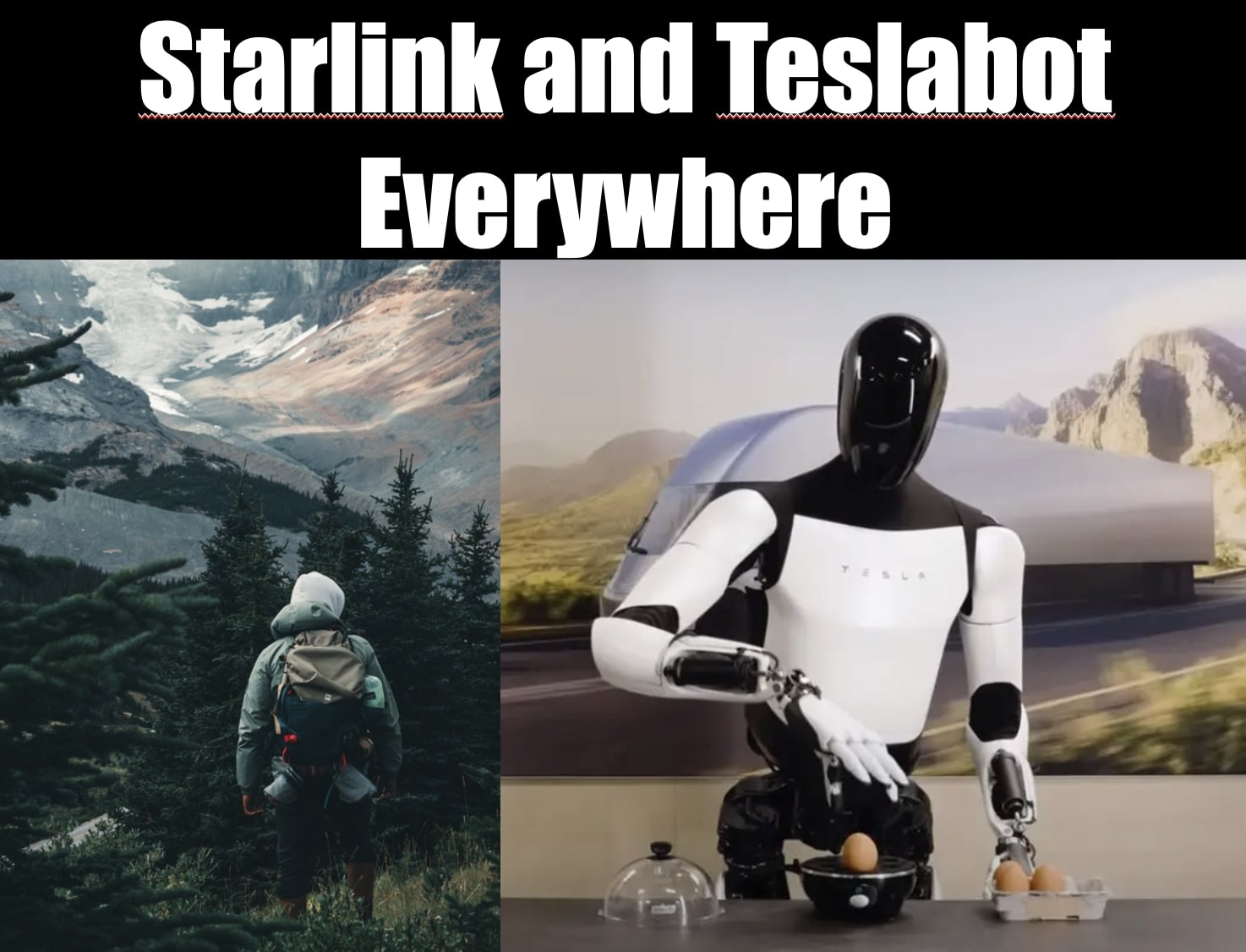Elon Musk says @SpaceX will release Starlink Mini later in 2024. It will be small enough to fit in your backpack. The outdoor use case also requires the power requirements for Starlink to be muchless. You will be able to pull the terminal out of your backpack in the middle of nowhere and connect to fast reliable internet.
Multiple Starlink mini will also be able to create a Wifi communication mesh.
This will mean that a Teslabot could have a high speed internet data connection everywhere.
It means that Tesla cars and trucks will have high speed internet data connections everywhere.
The Tesla cars and Teslabot all have batteries to charge the Starlink internet for days.
This will be another advantage and synergy between Tesla, SpaceX and Starlink.
According to recent FCC filings, the dimensions of the Starlink Mini are approximately 10″ x 12″, about the size of a laptop. This makes the Mini about half the size of the current Starlink Standard dish.
NEWS: Elon Musk says @SpaceX will release Starlink Mini later this year. It'll be small enough to fit in your backpack.
You'll be able to pull the terminal out of your backpack in the middle of nowhere and connect to fast reliable internet. Incredible🛰️ pic.twitter.com/cs8Lbh0VsQ
— Sawyer Merritt (@SawyerMerritt) January 13, 2024
Elon Musk says Starlink mini to be released later this year. Portable size that could fit in your backpack!
What will be the Cost of the Kit? pic.twitter.com/F2bFT0lEKW— SirAqua K (@SirAquaK) January 13, 2024

Brian Wang is a Futurist Thought Leader and a popular Science blogger with 1 million readers per month. His blog Nextbigfuture.com is ranked #1 Science News Blog. It covers many disruptive technology and trends including Space, Robotics, Artificial Intelligence, Medicine, Anti-aging Biotechnology, and Nanotechnology.
Known for identifying cutting edge technologies, he is currently a Co-Founder of a startup and fundraiser for high potential early-stage companies. He is the Head of Research for Allocations for deep technology investments and an Angel Investor at Space Angels.
A frequent speaker at corporations, he has been a TEDx speaker, a Singularity University speaker and guest at numerous interviews for radio and podcasts. He is open to public speaking and advising engagements.


Mini sounds like it’s in that weird comms abyss between D2C satellite cellular and satcom in terms of available power and bandwidth. Wonder what the frequencies will be…
Though at that scale, a Teslabot charging during the day and short range roaming at night with remote support/human intervention via Starlink would be an interesting rural/outdoor scenario. Won’t be the fastest thing in the world due to power budget, but a slow walking swarm can eventually cover a lot of ground. Almost like a zombie apocalypse, but they only come at night…
Also very useful for Mars, when SpaceX creates Mars Starlink constellation with a robust laser link to Earth – these off the shelf systems will be all that’s need for swarms of robotic explorers and workers all over the planet, operated by people and AIs in a single settlement.
It takes light 3-22 minutes to go from Earth to Mars, depending upon the orbits. A round trip signal would take 6-44 minutes. Teleoperation from Earth to Mars would be problematic. The systems and robots would need to be nearly autonomous.
Brian, I think you missed his “operated by people and AIs in a single settlement”; He’s proposing teleoperation from Mars to Mars, not Earth to Mars.
Given the annoyances of space suits, I could see quite a bit of teleoperation going on on Mars.
When are they going to upgrade to Rhodomagnetic transmission? It’s got enormous advantages over the EM spectrum!
That’s what the Humanoids use if IIRC.
Did you watch “I,Robot” Starlink and Teslabots don’t mix well
Are the bots batteries that good?
I assume they could work for a couple hours and then need recharging.
OTOH I know the car batteries are already at the right power density.